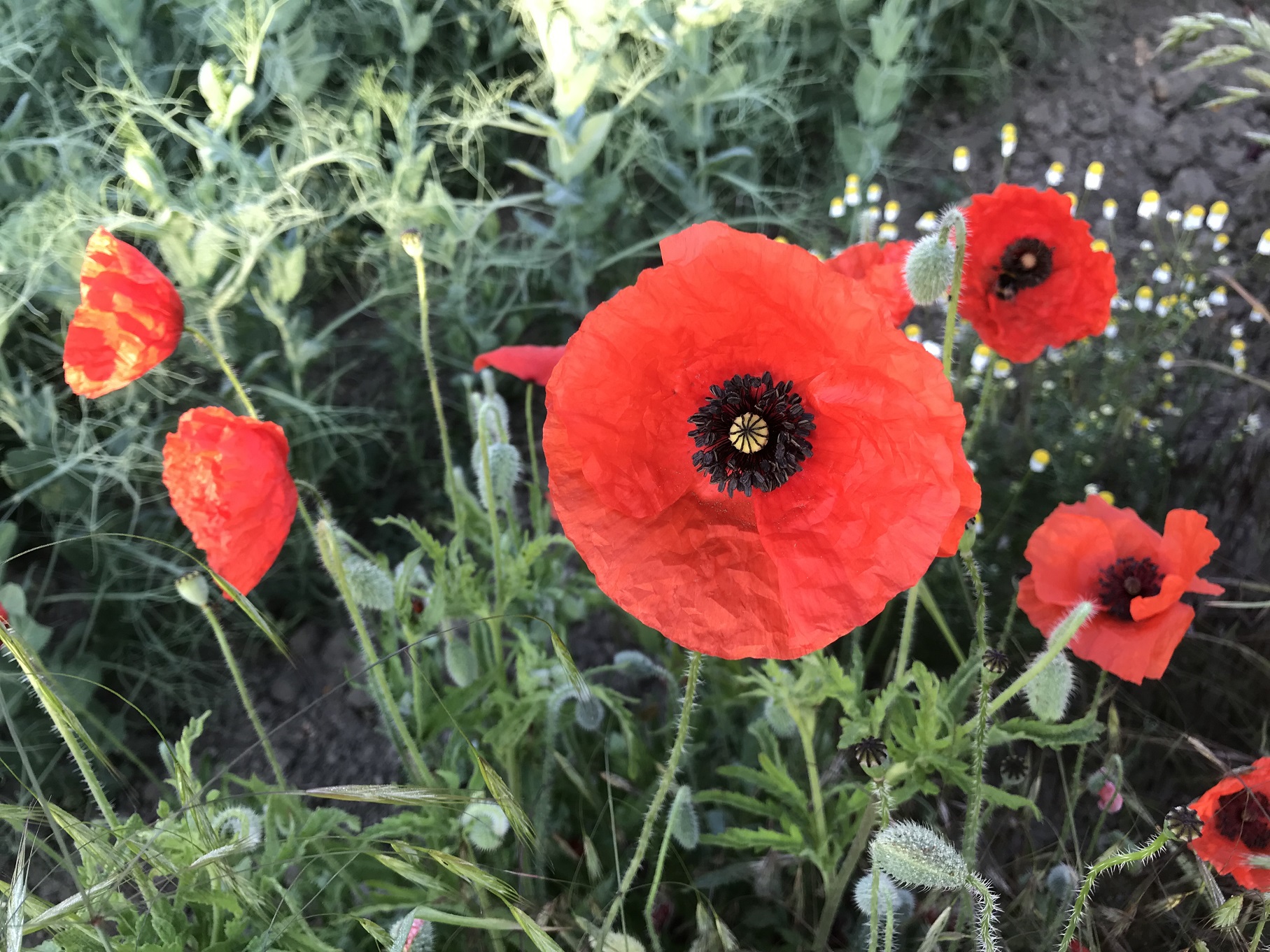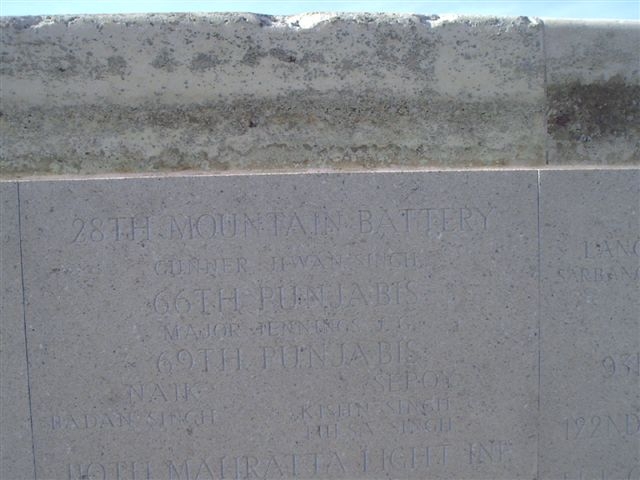John Jennings (1876 - 1915)
Uncle of Charles Buck. A career soldier in the Indian Army, Jack was attached to the Royal Dublin Fusiliers in 1915. He was killed at Gallipoli, leaving a wife and two young children.
- 41
- Died in the Great War
- 51.978513, 1.019173
Details
| Name: | John Gilderdale Jennings |
| Service: | Indian Army |
| Unit: | 66th Punjabis, attached to 6th Battalion, Royal Dublin Fusiliers |
| Rank: | Major |
| Date of Death: | 9th August 1915 |
| Age: | 39 |
| Commemorated: | Panel 255, Helles Memorial, Gallipoli, Turkey |
The Gallipoli campaign is often considered to be a costly failure for the Allies. 1 The Gallipoli campaign is often considered to be a costly failure for the Allies: Of the 410,000 British, French and Commonwealth soldiers involved in the 8 month campaign, just over 61 per cent became casualties, including 50,133 Allied dead. (Statistics provided by the Australian War Memorial Canberra. Various figures exist of the Allied casualties during the campaign, so that most authorities now believe it is now impossible to give a definitive figure.) Two of the men commemorated on East Bergholt’s Memorial to those who gave their lives in the Great War, were killed there. One was 39 year old John Gilderdale Jennings.
Family Background and Early Life
John – or Jack as he was known to his family – was born in Sitapur Oudh, India on 23rd April 1876, the only son of Robert Melvill Jennings and his wife Agnes Mary Jennings (nee Gilderdale).
Jack’s father was a career officer in the British Indian Army, and at the time of his son’s birth was a Captain in the Bengal Cavalry. Agnes was the daughter of the Reverend John Gilderdale who had been headmaster of Forest School, Walthamstow and was later the English Chaplain in Dresden, Germany. Robert and Agnes were married in 1873 and would have two children together. 2 Jack’s nephew – the son of his sister, Annie – is also commemorated on the East Bergholt Memorial to those who gave their lives in the Great War. Lieutenant Charles Melvill Buck (Indian Army Reserve of Officers, attached to the Royal Flying Corps) was killed in action near Ypres on 24 January 1917, aged 22.
Like many children of Indian Army officers, Jack was educated in the U.K. Between 1888 and 1893 he attended the United Services College at Westward Ho, on the north Devon coast. 3 Founded by a group of Army officers in 1874, the United Services College aimed to prepare its pupils for a career in the military. Probably its most famous pupil was the writer, Rudyard Kipling. Jack’s enrolment at the College strongly suggests that his father – the son of a clergyman – intended that Jack would follow a career in the Army.
Indian Army
Jack was a cadet at the Royal Military College at Sandhurst, and upon graduation in August 1896 was commissioned as a 2nd Lieutenant on the Unattached List of the Indian Army. 4 The “Unattached List – Officers – Indian Army List” detailed graduates of the Royal Military Academy, Sandhurst, who had been granted commissions in the Indian Army but were serving a probationary year with a British Army regiment in India before joining the Indian Army proper. During their probationary year they were required to obtain a basic qualification in a vernacular language failing which their probation was extended by a further year. (Source British Library website)
He was initially posted to the Queen’s (Royal West Surrey Regiment) in India, and with them he took part in operations on the North West Frontier in Bajour and Mohmand.
Having completed his probationary year, Jack was attached to the 34th (Punjab) Regiment of Bengal Infantry, which was a Pioneer unit. 5 The Pioneer regiments in the Indian Army were units trained and equipped for road, rail and engineering work, as well as for conventional infantry service. With them he saw service during the Tirah Expedition, in the Bara Valley between 7th and 14th December 1897.
Jack subsequently saw service in China in 1900 during the Boxer Rebellion, before taking part in the Waziristan Expedition on the North West Frontier in 1901 to 1902.
Appointed to the 66th Punjabis
In 1902, Jack – who had been promoted to the rank of Lieutenant 4 years earlier – was appointed to the 66th Punjabis, an infantry regiment. After serving as the Battalion’s Adjutant, he was promoted to the rank of Captain in 1905.
There were several occasions in the next nine years when Jack did not actually serve with the Battalion in India, but was on leave for periods of up to a year. It is certain that on at least some of these occasions he returned to the U.K.
At some point between 1902 and 1911, Jack’s father – who retired in 1906 as General Robert Jennings – moved with his wife to The Hermitage in East Bergholt. 6 In Queen Victoria’s Birthday Honours List of 1896, Robert was appointed as a Companion of the Order of the Bath (CB). By 1905, Robert Jennings had reached the rank of General. Retiring in 1906, three years later he was appointed Knight Commander of the Order of the Bath (KCB) and was entitled to the prefix of Sir. The Order of the Bath is the fourth most senior of the British Orders of Chivalry. Whether Jack visited his parents there is not known.
In 1908, Jack was initiated into the Kitchener Lodge of Freemasons, which was then located in the Indian city of Simla. Since the 1860’s, Simla had been the summer capital of British India.
Four years later, on 18 April 1912, at the church of St. Mark in North Audley Street, London, Jack married Adeline Braund Forrester. Adeline was the 31 year old widow of Dr. Charles Forrester, of Cairo, Egypt, who already had a 3 year old boy called Charles from her previous marriage.
Ten months later, Adeline and Jack’s first child, a boy who they called John Melvill, was born in London. They would have one more child, a daughter called Suzanne, who was born in April 1915, most likely at her parents’ home at 1 Hyde Park Terrace in London.
Jack was promoted to the rank of Major on 5th August 1914, two days after Great Britain declared war on Germany following the latter’s invasion of neutral Belgium.
Attached to 6th Battalion, The Royal Dublin Fusiliers
In June 1915, Jack was attached to the 6th Battalion of The Royal Dublin Fusiliers. At that time they were stationed at Basingstoke, but had been earmarked to be sent overseas as reinforcements for the Mediterranean Expeditionary Force fighting at Gallipoli.
The Allied landings at Gallipoli were intended to gain control of the adjacent Dardanelles straights, a move which – it was hoped – would lead to the capture of Constantinople, and encourage Germany’s ally, the Ottoman Empire, to sue for peace.
The 6th Royal Dublin Fusiliers embarked at Devonport on 9th July 1915, and arrived at the island of Lemnos – the main supply base for the Gallipoli Campaign – 15 days later.
Since the initial Allied landings on the Gallipoli peninsular in April, little progress had been made, and the campaign had deteriorated into a costly stalemate. In an attempt to regain the initiative, the British planned another landing – using fresh forces – at Suvla Bay, which lay behind the Turkish lines.
Suvla
The British landings at Suvla started on 6th August and met little opposition. Unfortunately, the British commander failed to push his advantage, and even as Jack and his battalion landed on the morning of the 7th, the Turks were moving in sufficient forces to soon effectively block further advances.
Officially, Jack is recorded as having lost his life on 10th August 1915. In fact, the Battalion’s War Diary and other sources make it clear that he actually lost his life in an attack made the day before.
On the 9th August, the Battalion were part of an attack intended to take the high ground behind the village of Anafarta Saghir. The 6th Royal Dublin Fusiliers and the 6th Royal Irish Fusiliers were tasked with the capture of Hill 70 (also called Scimitar Hill), which was a ridge to the north east of Chocolate Hill. 7 The Memorial plaque in St. Mary’s Church, East Bergholt states that Jack was killed “leading his men to the attack on Chocolate Hill”. Unfortunately, this is a little misleading, as Chocolate Hill had been captured the day before. It is possible that Jack was killed on Chocolate Hill, but the Battalion was actually attacking Hill 70 from there.
The attacking battalions effected a lodgement on Hill 70 and were subjected to repeated Turkish counter-attacks. The situation was made worse by the fact that “a series of bush fires caused by their shells made the position almost untenable, and threatened the wounded with the most terrible of deaths.” 8 Taken from “The Tenth (Irish) Division in Gallipoli” by Bryan Cooper. H Jenkins Limited, 1918. When the units on their flank were forced to withdraw, the Fusiliers were compelled to conform and moved back to their original positions.
Both Fusiliers battalions lost heavily in the attack. The 6th Royal Dublin Fusiliers suffered casualties of 11 officers, and 259 Other Ranks. Jack had been seen to have been wounded and fallen twice during the attack and was one of the missing.
Jack has no known grave and is officially commemorated on the Helles Memorial. 9 The Helles Memorial, stands on the tip of the Gallipoli Peninsula, and takes the form of an obelisk over 30 metres high, which can be seen by ships passing through the Dardanelles. It commemorates over 21,000 United Kingdom and Indian servicemen who died at on the peninsula – or were buried at sea nearby – but who have no known grave.
A small number of Australians who died at the Helles bridgehead, and who have no known grave, are also commemorated on the Helles Memorial. This does not include any of the Australians who died at the ANZAC bridgehead, and who have no known grave: They are commemorated on the Lone Pine Memorial to the Missing at ANZAC.
Postscript
Adeline Jennings did not remarry and died in London in 1956 at the age of 76.
Jack is also remembered on a plaque erected by his family on the South Wall of St. Mary’s Church in East Bergholt.
Copyright © Mark Ashmore, 2024
- 41
- Died in the Great War
- 51.978513, 1.019173


